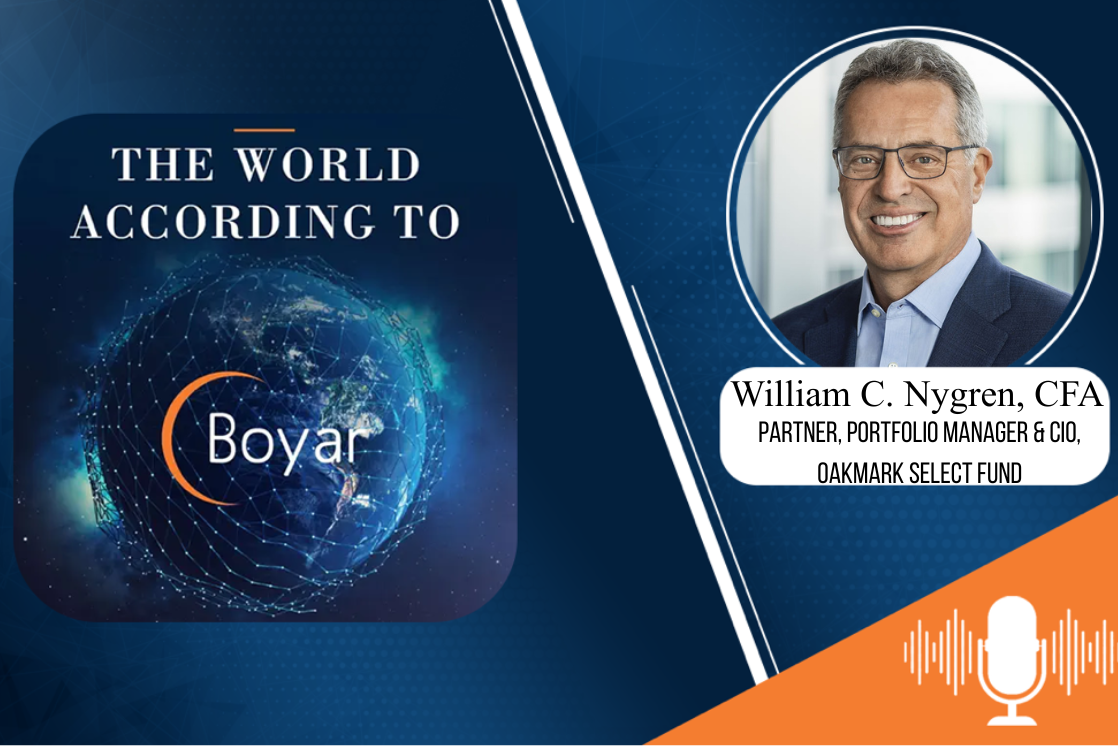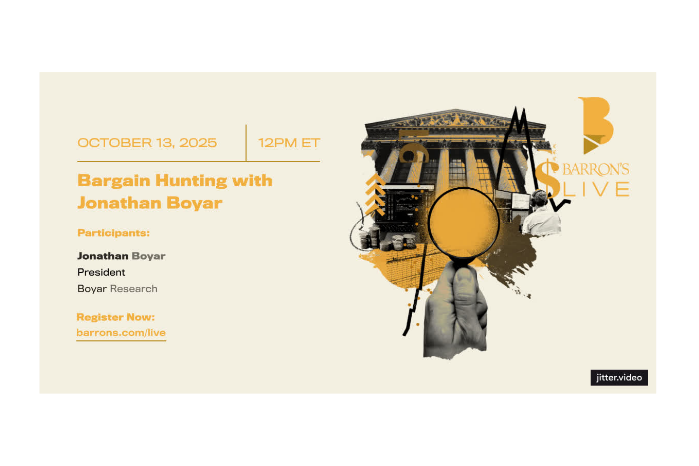A Market of Stocks
Previous The World According to Boyar podcast guests Mellody Hobson and John Rogers are two of the best investors and businesspeople I know. So when they write something investment-related, I read it. The pair recently penned an article for The Wall Street Journal, titled What the Stock Market Taught Us This Year, that contains valuable insights into how to make sure your investment strategy avoids some of the biggest market traps.
Excerpt:
The uncertainty around near-term interest rates has dominated the story of the stock market in 2023. Perhaps not since the 1970s—when runaway inflation and sky-high interest rates were the crisis du jour—has monetary policy affected investment outcomes in such a pronounced way . . .
But as someone once declared, “It is a market of stocks, not a stock market.” This is a wise reminder that no matter the conditions, there are investment opportunities to be had. In fact, the more economic obfuscation, the more sectors are hammered, the more stocks are orphaned, the better the odds of long-term investment success.
Boyar’s Take:
In Mellody and John’s view, conventional wisdom, which says “don’t fight the Fed,” has created so much market noise that investors have become distracted. They warn that if you invest by “watching the Fed like a tennis match and then reacting every volley, you will get it wrong.”
Their argument makes sense: sectors that have sold off, like housing and banking, could be interesting places to invest once consumers adjust to the new interest rate environment, where money is no longer free. In fact, this year our institutional research service profiled housing-related names like UFP Industries, MasterBrand, Green Brick Partners, LGI Homes, and NVR that we believe were unduly punished out of concerns over interest rates (among other factors).
Pointing to the Magnificent Seven, John and Mellody offer another warning as well: “Don’t buy the hype.” The continued dominance of today’s market favorites is far from set in stone, and at current levels the risk/reward they offer is not in investors’ favor. Amazingly, they point out that the total market cap of the Magnificent Seven is three times the size of all the stocks in the Russell 2000 put together. In my opinion, some of the Seven (such as Microsoft and Google) might be worth owning, but other members of this high-flying group, such as Nvidia and Tesla have valuations that make me uncomfortable.
Instead, say Mellody and John, investors are better off going where there is less competition. (The average Magnificent Seven stock is followed by 47 analysts, versus 5 for a typical small-cap company.) I agree with them: less analyst coverage leads to less market efficiency, increasing the odds of finding the proverbial dollar selling for fifty cents. But investors will need to do their homework to be sure they steer clear of potential landmines: many stocks in the Russell 2000 are unprofitable or simply don’t earn enough to make up for their debt load. Here, as always in investing, it pays to be choosy.
It also pays to know your history. When I first started investing, my father, Mark, told me that the four most dangerous words in our business are “This time it’s different.” With high interest rates on everyone’s mind, it can be tempting to think that we’re living in extraordinary times, but that’s simply not true. Yes, the speed at which we’ve seen rates increase has been unique, but as Mellody and John point out, over the past five decades U.S. interest rates have averaged 5.98% (not too far from today’s rates)—and, what’s more, the current figure is significantly lower than we saw in 1980, when rates reached 20%. Investors, they warn, are often anchored to the idea that the S&P 500 always beats everything else—but just like interest rates, it eventually reverts to the mean.
The Bottom Line:
And that’s precisely the reason we like to steer clear of the hype—instead of trying to time the market so we can exit just ahead of the inevitable swing back down toward the mean, we look for companies that are clearly overdue for recognition of their value. Then, when they start attracting attention, we can ride the same curve from the other direction, toward value instead of away from it. As Mellody and John might put it, smart investors look past the hype to see real value, along with the catalyst that can make others see it, too—because as much as perceptions matter in the market (and they do), in the end investing comes down to what is real.
One Final Thought:
Investors who are getting excited about the hype surrounding AI should keep in mind previous speculative excesses like the nifty fifty, dot.com stocks and more recently SPACs. While there are long-term winners in almost every period of mania, these winners are often the exception not the rule.
Important Disclosures. The information herein is provided by Boyar’s Intrinsic Value Research LLC (“Boyar Research”) and: (a) is for general, informational purposes only; (b) is not tailored to the specific investment needs of any specific person or entity; and (c) should not be construed as investment advice. Boyar Research does not offer investment advisory services and is not an investment adviser registered with the U.S. Securities and Exchange Commission (“SEC”) or any other regulatory body. Any opinions expressed herein represent current opinions of Boyar Research only, and no representation is made with respect to the accuracy, completeness or timeliness of the information herein. Boyar Research assumes no obligation to update or revise such information. In addition, certain information herein has been provided by and/or is based on third party sources, and, although Boyar Research believes this information to be reliable, Boyar Research has not independently verified such information and is not responsible for third-party errors. You should not assume that any investment discussed herein will be profitable or that any investment decisions in the future will be profitable. Investing in securities involves risk, including the possible loss of principal. Important Information: Past performance does not guarantee future results.
This information is not a recommendation, or an offer to sell, or a solicitation of any offer to buy, an interest in any security, including an interest in any investment vehicle managed or advised by affiliates of Boyar Research. Any information that may be considered advice concerning a federal tax issue is not intended to be used, and cannot be used, for the purposes of (i) avoiding penalties imposed under the United States Internal Revenue Code or (ii) promoting, marketing or recommending to another party any transaction or matter discussed herein. Clients of an affiliate of Boyar Research and employees of Boyar Research own shares in MSFT, GOOGL, & NVDA.










